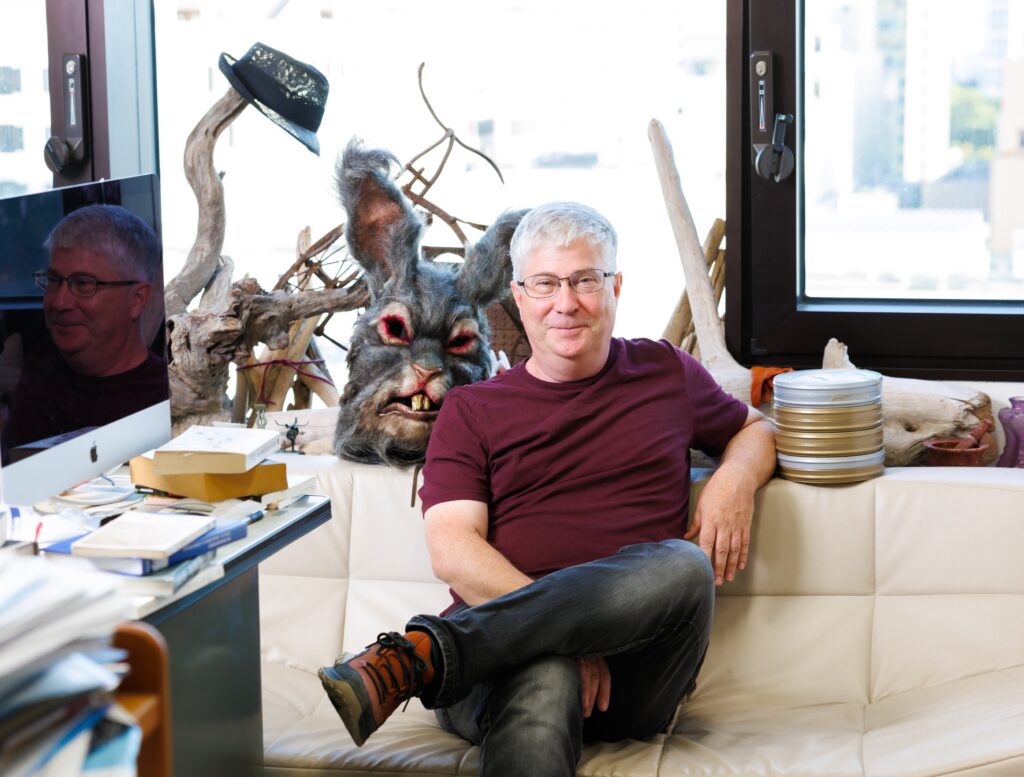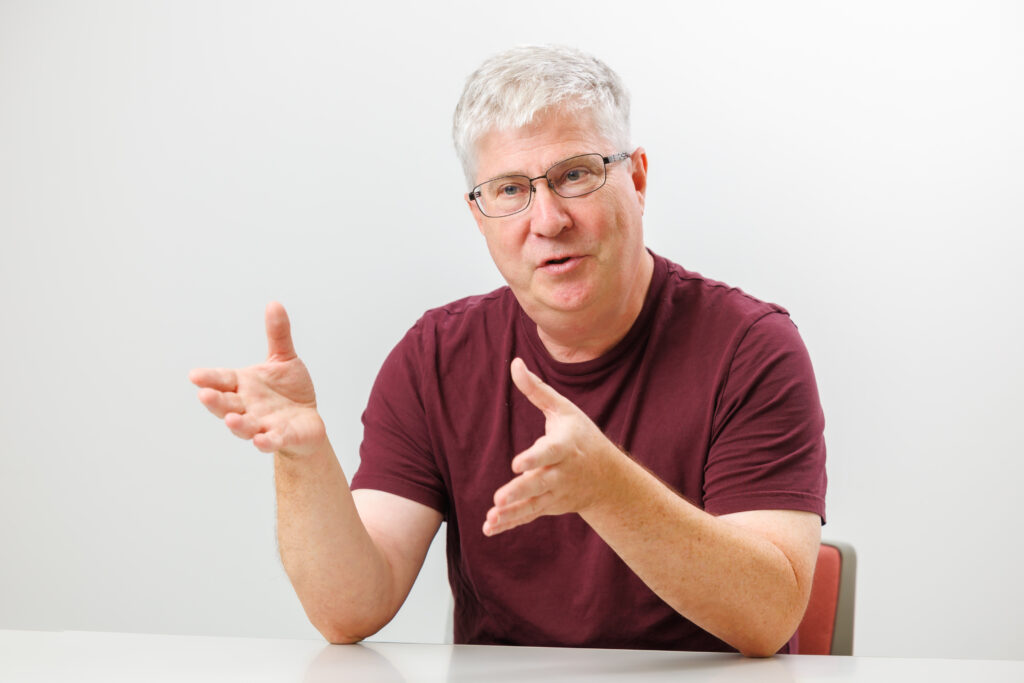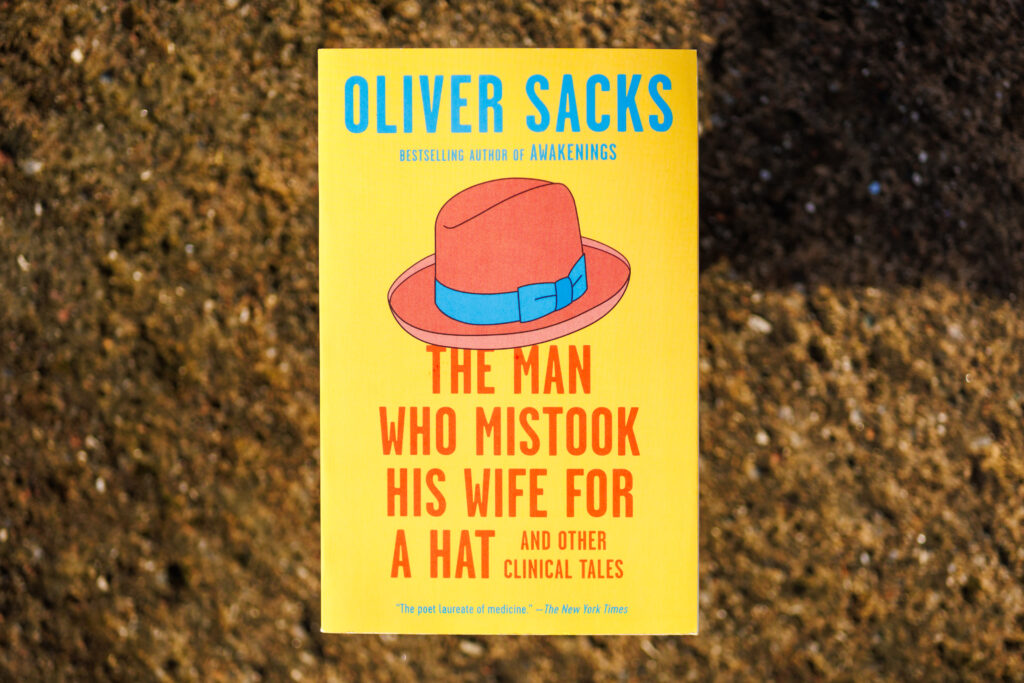
Professor John Williams of the Faculty of Foreign Studies produces films and teaches film production and arts-practice skills, through which he hopes to cultivate curiosity, attention, and empathy. He discusses his ongoing project to infuse urban lives with vital energies from rural areas in Sado Island through the arts.
I am a filmmaker who writes, directs, and produces films. My films are either narrative fictions which I’ve written or adaptations of classic stories and more recently I’ve begun making documentaries. In the classroom, I teach filmmaking skills including shot composition, camera movement techniques, coordinating actors’ movements with the camera, and communication with actors, but I try to broaden this into a more philosophical approach, asking students to think about what kind of stories they want to tell and why they want to tell them.
Students who like the production class can go on to take my seminar where they write and direct a 15 to 20-minute film for their graduation project. Several of my former seminar graduates now pursue careers in the film industry. Some are directors while others work on the business side.
Film production as a way to express the uniqueness of Sado Island

My research initially focused on the role of the arts in regional revitalization. I first began to think about this while filming a documentary about the lives of the residents of Kita-Ushima, a small fishing village on Sado Island which lies off the west coast of Japan. Over frequent visits to Kita-Ushima, I started to wonder what contribution artists, such as filmmakers or theater directors, could make towards revitalizing a declining rural region.
I started with a plan to direct a play on a natural “stage” with the Sea of Japan as a backdrop, on the grounds of a former shrine that had been swept away by a storm. Since I am from Wales in the U.K., I chose the renowned Welsh play “Under Milk Wood” by Dylan Thomas which is set in a small fishing village reminiscent of Kita-Ushima. I intended to produce a local version, envisioning it as a way to attract an audience from Tokyo to Kita-Ushima and possibly start an annual theater festival that might help revitalize the area.
Unfortunately, due to COVID-19, it was impossible to bring large numbers of people to the village. Instead, I changed the project into a film based on the themes of the original Welsh play and used local puppetry traditions and legends to transform the original play into a visual piece.
Shift in the project perspective to harness rural energy to transform urban living
While filming, I had begun to question my original ideas and eventually decided that my thinking about regional revitalization was completely mistaken. The residents of the village were already full of life, brimming with vitality. It became clear that they didn’t require revitalization; instead, I began to think it was people like me and my students, urban dwellers who needed re-energizing. Despite our material affluence, many people in cities seem to be lacking in some kind of “vital spirit” due to long working hours and the crushing effects of the over technological, consumer society we all now inhabit. Young people suffer from high rates of depression all over the world and I see this in the classroom and have noticed the change in my students. I really believe this stems from a lack of connection with nature.
As I was beginning to realize this, I redirected the focus of my project away from film and towards the arts in general, but using the arts as a kind of conduit to explore the energy that already exists on Sado. I have started to take a diverse range of artists and researchers to Sado in the hope that they will draw inspiration and energy from the locale and its nature to bring back to the cities.
I have also found many artists around the world who share a mutual interest in harnessing art to express the unique energy of their regions and connections with the natural world. I believe in the significance of remote places for human well-being, emphasizing the connection between nature and people. The conventional idea of a city as the central hub is no longer valid. From Sado, it is now feasible to connect with other remote small villages worldwide, and with Elisabeth Brun, an artist and filmmaker in Norway, we are trying to establish a global network of small villages sharing a common pursuit of creativity and vitality.
In Sophia I am team-teaching a class with Professor Takeshi Ito, a political science professor at the Faculty of Liberal Arts. The course began in 2023 and is called “Meaningful Life.” Students spend time in Kita-Ushima, creating artworks which reflect their time in the village and exploring the environment, the culture and the agricultural practices of the area. We hope that the people and nature in the village will provide them with hints to understanding urgent issues such as climate change and reshape their perspectives on life. Many students typically prioritize working for a big corporation and material gains as the path to a “good life.” Takeshi and I hope that they will question these values after their time on Sado.
I’m still interested in filmmaking though, and I would like to make a few more films on Sado Island. I think any collaborative, creative practice helps to foster students’ curiosity, attention and empathy. I think that the ability to understand and connect with people’s feelings should also extend to animals and other creatures. Artists, including writers and filmmakers, foster empathy through storytelling. Through imaginative filmmaking, I hope students will experience and develop their connectedness to each other and the world.
The book I recommend
“The Man Who Mistook His Wife for a Hat and Other Clinical Tales”
by Oliver Sacks, Vintage

This book really changed my perspective on life. Written by a renowned neurologist, it consists of the stories of Oliver Sacks’s patients who suffer from various forms of brain damage or neurological conditions. The book is both a work of art and a work of science and a case study in empathy and storytelling. Sacks’s curiosity and care for his patients is so engaging and the book opens up whole new ways of looking at the world, making the reader question the limitations and potential of our own minds.
-
John Williams
- Professor
Department of English Studies
Faculty of Foreign Studies
- Professor
-
John Williams is originally from Wales in the U.K. He studied French and German Literature at Cambridge University and came to Japan in 1988. He lived in Nagoya for ten years and directed several short films and a documentary there before making his first Japanese feature film, “Firefly Dreams.” Since then, he has written, directed, and produced several other feature films and worked in various capacities in the Japanese film industry, in development, in co-production, and on training schemes for producers. He joined Sophia University in 2001.
- Department of English Studies
Interviewed: September 2023